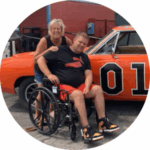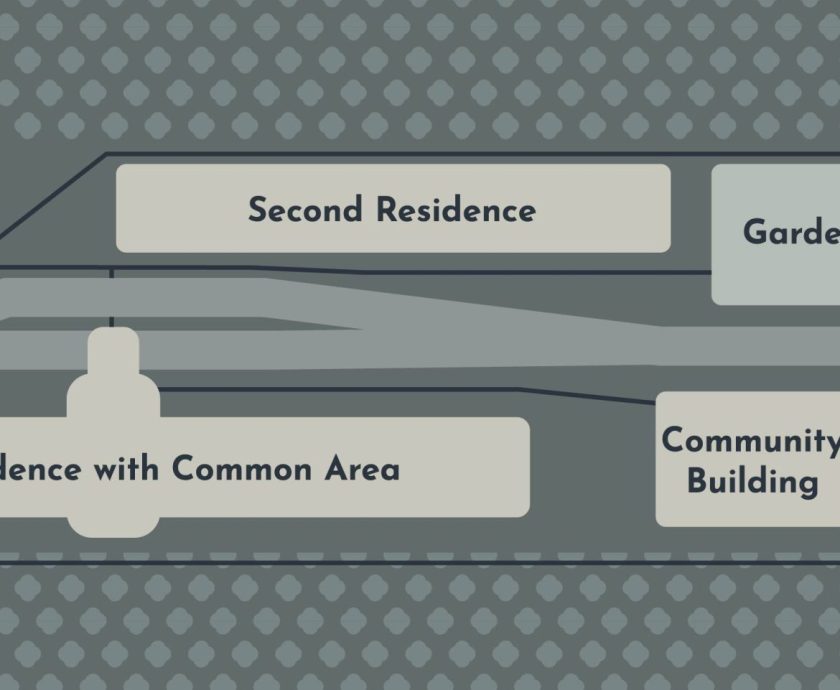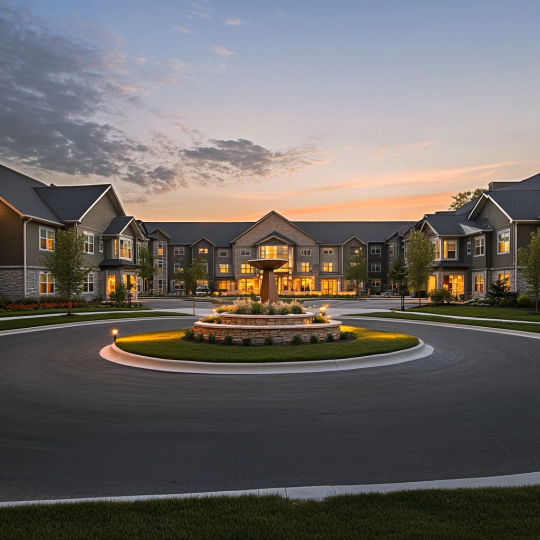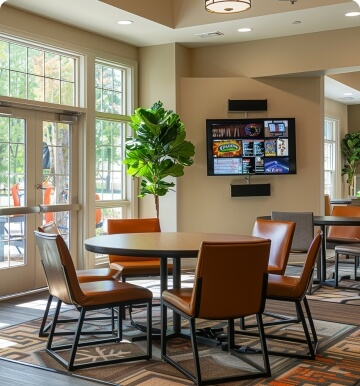Cognitive Rehabilitation Exercises for TBI Survivors Guide
Key Takeaways• Cognitive rehabilitation harnesses neuroplasticity to rebuild memory, attention, and executive function.
• Home-based programs and physical therapy can be tailored to each survivor's needs.
• Speech therapy and emotional coping strategies are vital for holistic recovery.
• Virtual support groups and government funding help survivors and caregivers access resources.
– Brief overview of traumatic brain injury (TBI) and its cognitive effects
– Importance of early, structured cognitive rehabilitation exercises for TBI survivors
– Preview of article sections and outcomes
Understanding Cognitive Rehabilitation for TBI Survivors
What Is Cognitive Rehabilitation?
When we talk about cognitive rehabilitation, we're really talking about a structured approach to rebuilding thinking skills after a traumatic brain injury. It's not a one-size-fits-all process, but rather a personalized journey that addresses each survivor's unique challenges.
"Cognitive rehabilitation isn't just about healing—it's about rebuilding connections and relearning how to navigate the world," explains Dr. Sarah Johnson, a neuropsychologist specializing in TBI recovery.
The core principles revolve around two main approaches: restorative and compensatory strategies. Restorative techniques aim to improve impaired functions through repetitive exercises that target specific cognitive skills. Think of it like strengthening a muscle through consistent training. Compensatory strategies, on the other hand, help survivors develop workarounds for persistent difficulties—like using a smartphone reminder app if memory remains challenging.
According to the American Congress of Rehabilitation Medicine's evidence-based guidelines, the most effective programs blend both approaches, with exercises specifically tailored to each person's goals and abilities.
Goals and Benefits of Cognitive Rehab After TBI
The primary goal of cognitive rehabilitation is to improve daily living skills and foster independence. For many survivors, this means regaining the ability to manage medications, prepare meals, handle finances, or return to work or school.
"We're not just treating cognitive symptoms in isolation," says occupational therapist Miguel Sanchez. "We're focused on real-world outcomes that enhance quality of life and emotional well-being."
Benefits extend far beyond cognition alone. Successful rehabilitation often leads to:
- Increased confidence and self-efficacy
- Reduced caregiver burden
- Improved social interactions and relationships
- Greater community participation
- Enhanced emotional regulation
Many survivors report that structured cognitive exercises provide a sense of purpose and measurable progress during what can otherwise feel like an uncertain recovery journey.
Key Cognitive Domains Addressed
Cognitive rehabilitation typically targets several interconnected thinking skills affected by TBI:
Attention: This foundational skill involves focusing on relevant information while filtering out distractions. Rehabilitation might include exercises to improve sustained attention (staying focused over time), selective attention (focusing despite distractions), and divided attention (managing multiple tasks).
Memory: Both short-term and long-term memory systems are addressed through specific techniques. The National Institute of Neurological Disorders and Stroke (NINDS) explains that "neuroplastic mechanisms like synaptic reorganization support memory recovery, especially when training occurs during critical post-injury windows."
Executive Function: These higher-level skills involve planning, organization, problem-solving, and self-regulation. Exercises might include structured problem-solving activities, organizational systems, and goal-setting practice.
Processing Speed: Many survivors experience slowed thinking after TBI. Gradual, timed activities help rebuild neural pathways for faster information processing.
Neuroplasticity Exercises for TBI Recovery
How Neuroplasticity Supports Brain Healing in TBI
Neuroplasticity—the brain's remarkable ability to reorganize itself by forming new neural connections—is the foundation of recovery after traumatic brain injury. This process allows intact brain regions to potentially take over functions from damaged areas.
"The brain's plasticity is truly remarkable," notes Dr. Robert Chen, neurologist and TBI researcher. "Even years after injury, we see evidence that targeted exercises can stimulate new neural pathways."
The mechanisms behind this healing involve synaptic reorganization—essentially, the brain creating new connections between neurons. This happens through processes like:
- Axonal sprouting: Healthy neurons grow new projections to connect with other neurons
- Dendritic branching: Neurons develop more receiving structures to form new connections
- Synaptic strengthening: Existing connections become stronger with repeated use
The timeline of neuroplastic changes varies by individual, but research indicates several important phases. According to NINDS resources, the most dramatic neuroplastic changes often occur in the first 6-12 months post-injury, though meaningful reorganization can continue for years.
Best Neuroplasticity Exercises for Memory Improvement
Memory challenges are among the most common and frustrating symptoms after TBI. Fortunately, specific neuroplasticity exercises can help rebuild these crucial networks:
Spaced Retrieval Drills
This evidence-based technique involves recalling information over increasingly longer intervals. For example:
- Learn a new phone number
- Recall it after 30 seconds
- Then after 2 minutes
- Then after 5 minutes
- Continue extending the time between recall attempts
"Spaced retrieval works because it strengthens the neural pathways involved in both storing and accessing memories," explains neuropsychologist Dr. Lisa Tanaka. "It's particularly effective for TBI survivors because it builds in both success and gradual challenge."
Visual Imagery and Association Games
Creating vivid mental images and linking new information to existing knowledge leverages intact memory systems to support damaged ones.
Try this exercise recommended by BrainLine: To remember a person's name (let's say "Baker"), visualize that person holding a loaf of bread or wearing a baker's hat. The more unusual or emotionally engaging the image, the stronger the memory connection.
Incorporating Multisensory Stimulation
The brain processes information through multiple sensory channels simultaneously. After TBI, engaging multiple senses during cognitive exercises can help strengthen neural networks and improve learning.
Combining Tactile, Auditory, and Visual Tasks
A simple exercise might involve:
- Holding different textured objects (tactile)
- While listening to specific sounds or words (auditory)
- While looking at corresponding images (visual)
- Then recalling the associations
"Multisensory rehabilitation essentially gives the brain multiple 'hooks' to hang information on," says occupational therapist Rachel Wong. "If one sensory pathway is compromised, the others can help compensate."
Example Exercise Routines
A practical multisensory memory routine might include:
- Morning: Sort colored blocks by shape while naming each (visual-tactile-verbal)
- Afternoon: Follow a simple recipe, focusing on smells, textures, and written steps
- Evening: Listen to a short podcast while drawing what you hear
How to Start Neuroplasticity Exercises at Home for TBI
Beginning neuroplasticity exercises doesn't require specialized equipment—just consistency and the right approach.
Simple Daily Routines
Start with 15-20 minute sessions, twice daily, focusing on one cognitive domain at a time. For example:
- Morning: Attention exercises (like finding specific letters in a newspaper article)
- Evening: Memory exercises (such as recalling details from the day)
"The key is consistency over intensity," advises TBI rehabilitation specialist Dr. James Wilson. "Five minutes daily is better than an hour once a week."
Tracking Progress and Adjusting Difficulty
Keep a simple log of exercises completed and performance. Note both objective measures (time, accuracy) and subjective experiences (fatigue, frustration). This information helps identify when to increase challenge.
The Mayo Clinic recommends following the "80% rule": When you can complete an exercise successfully about 80% of the time, it's time to make it slightly more difficult by adding elements, reducing time, or increasing complexity.
Home-Based TBI Rehabilitation Programs
Designing a Personalized Home-Based Rehab Routine
Creating an effective home program starts with identifying specific, meaningful goals. The Mayo Clinic emphasizes using the SMART framework—goals should be Specific, Measurable, Attainable, Relevant, and Time-bound.
Instead of a vague goal like "improve memory," a SMART goal might be: "In four weeks, I will independently remember my morning medication routine 6 out of 7 days without reminders."
"Personalization is crucial," emphasizes occupational therapist Karina Diaz. "A 25-year-old athlete recovering from a sports concussion needs different activities than a 67-year-old recovering from a fall. Both the content and the schedule should reflect the individual's life and priorities."
Scheduling and Consistency Tips
Establishing a consistent routine helps minimize the cognitive load of decision-making. Consider these practical tips:
- Schedule rehabilitation exercises at the same times each day
- Start with shorter sessions (10-15 minutes) and gradually increase
- Place visual reminders in frequently seen locations
- Use smartphone alerts or timers
- Pair exercises with existing habits (like after brushing teeth)
- Build in rest periods to prevent cognitive fatigue
Tools and Resources for DIY Cognitive Rehab
The digital revolution has created unprecedented access to cognitive rehabilitation tools that can be used at home.
Recommended Apps, Workbooks, and Games
Several evidence-informed resources stand out for home-based cognitive rehab:
- Apps: Constant Therapy, Lumosity, CogniFit, and Elevate offer progressive cognitive exercises
- Workbooks: "Brainlash: Maximize Your Recovery from Mild Brain Injury" and "The Cognitive Rehabilitation Workbook"
- Games: Chess, Sudoku, word search puzzles, and specialized card games like "Cognifit Playing Cards"
"Digital tools can provide the structure and immediate feedback that's so important for effective practice," notes speech-language pathologist Jasmine Park. "Many apps can also adjust difficulty based on performance, similar to what we do in clinical settings."
Adaptive Equipment and Safety Considerations
Physical limitations often accompany cognitive challenges after TBI. Consider these safety adaptations:
- Non-slip mats for tabletop activities
- Enlarged print or screen magnifiers
- Voice-to-text software for written exercises
- Adapted writing utensils for motor difficulties
- Ergonomic seating to prevent fatigue
Always consult your healthcare provider about safety precautions specific to your situation, especially regarding fall prevention and activity tolerance.
Caregiver Involvement and Support
Family members and caregivers play a crucial role in home-based rehabilitation, but finding the right balance requires thoughtfulness.
Training Family Members in Exercise Facilitation
"Caregivers who understand the 'why' behind exercises tend to provide more effective support," explains neuropsychologist Dr. Michael Rivera. "Brief training can transform a family member from simply reminding about exercises to actually enhancing their effectiveness."
Key caregiver skills include:
- Understanding basic principles of each exercise
- Providing clear, concise instructions
- Offering the right level of cueing (not too much, not too little)
- Recognizing signs of fatigue or frustration
- Documenting progress accurately
Balancing Encouragement with Independence
Finding the right balance between support and autonomy is critical for both rehabilitation progress and emotional well-being.
"The goal is to be a scaffold, not a crutch," says TBI support group facilitator Elena Carter. "Good caregivers know when to step in and when to step back."
Practical strategies include:
- Starting activities together, then gradually reducing assistance
- Using verbal cues before physical assistance
- Celebrating independent attempts, even when imperfect
- Creating a "help signal" the survivor can use when truly needed
- Scheduling specific independent practice times
Physical Therapy Techniques for Traumatic Brain Injury
Role of Physical Therapy in Cognitive Recovery
The connection between physical movement and cognitive function represents one of the most exciting frontiers in TBI rehabilitation. Far from being separate domains, movement and thinking are deeply interconnected in the brain.
"We're seeing compelling evidence that targeted physical activities can enhance cognitive recovery," explains neuro-physical therapist Dr. Marcus Johnson. "Movement activates neural networks that overlap with those involved in attention, memory, and executive function."
The Mayo Clinic highlights how activities that challenge both physical and cognitive systems simultaneously—called dual-task training—can accelerate recovery across multiple domains.
Examples of Dual-Task Training
Effective dual-task exercises combine physical movements with cognitive challenges:
- Walking while naming items in a category (animals, countries, etc.)
- Catching and throwing a ball while counting backward
- Following a stepping pattern while solving simple math problems
- Maintaining balance on an uneven surface while sorting playing cards
"These activities reflect real-world demands more accurately than isolated cognitive or physical exercises," notes Dr. Johnson. "After all, we rarely use one system in isolation during daily life."
Balance and Coordination Exercises for TBI Survivors
Balance and coordination challenges are common after TBI, affecting both safety and cognitive resource allocation.
"When you're constantly worried about falling, it's difficult to allocate mental resources to other tasks," explains vestibular specialist Dr. Ana Patel. "Improving balance and coordination actually frees up cognitive capacity."
Heel-Toe Walking, Balance Board Drills
Start with these foundation exercises:
-
Heel-to-toe walking: Place the heel of one foot directly in front of the toes of the opposite foot, creating a straight line as you walk forward.
-
Balance board progressions:
- Begin by standing on the board with support nearby
- Progress to gentle weight shifts
- Advance to maintaining balance while completing simple cognitive tasks
-
Clock reaches: Standing safely near support, imagine standing in the center of a clock and reach one foot toward different "hours" as called out.
Progressions and Adaptations
Safety always comes first when practicing balance exercises. Follow these progression principles:
- Move from supported to unsupported activities
- Progress from stable to unstable surfaces
- Advance from static positions to dynamic movements
- Add cognitive challenges gradually
- Increase duration before increasing difficulty
Gentle Physical Therapy Exercises After Severe TBI
After severe TBI, physical therapy often begins with fundamental movements that provide sensory input and prevent complications while respecting energy limitations.
Range-of-Motion and Posture Activities
Basic but essential exercises include:
-
Passive and active-assisted range-of-motion: Gently moving joints through their full range to maintain flexibility and provide proprioceptive input.
-
Positional awareness activities: Using verbal cues and mirrors to help survivors recognize and adjust their body position.
-
Seated weight shifts: Simple side-to-side or forward-back movements while seated to activate core muscles and provide vestibular stimulation.
"Even these simple movements stimulate brain activity," notes physical therapist Sarah Rodriguez. "We're not just maintaining physical function—we're providing organized sensory input that the healing brain needs."
Monitoring Fatigue and Safety
Post-TBI fatigue can be profound and unpredictable. The BrainLine resource emphasizes monitoring these fatigue indicators:
- Increased errors in simple tasks
- Slowed response time
- Irritability or emotional changes
- Headache intensification
- Visual changes or dizziness
- Slurred speech
"The right amount of challenge causes temporary fatigue but leads to progress," explains Dr. Rodriguez. "Excessive fatigue that doesn't resolve with rest can actually set recovery back. We call this the 'therapeutic window'—finding that sweet spot of just enough challenge."
Speech Therapy for Brain Injury Survivors
Common Speech and Language Challenges Post-TBI
Communication difficulties after TBI can range from subtle word-finding problems to profound language impairments. According to the American Speech-Language-Hearing Association (ASHA), several distinct patterns may emerge:
Aphasia involves difficulty understanding or producing language. A survivor might struggle to find words, comprehend complex sentences, or organize thoughts coherently.
Dysarthria affects the physical production of speech. The muscles used for speaking may be weak or uncoordinated, resulting in slurred or imprecise articulation.
Cognitive-linguistic deficits impact the thinking processes that support communication, such as attention, memory, and reasoning. A survivor might have trouble following conversations, staying on topic, or interpreting non-literal language like jokes or sarcasm.
"What makes TBI-related communication challenges unique is their variability," explains speech-language pathologist Dr. Jennifer Torres. "Someone might communicate perfectly in a quiet, one-on-one setting, but struggle significantly in noisy environments or group conversations."
Identifying Individual Therapy Targets
Speech therapy begins with comprehensive assessment to identify specific challenges. Common focus areas include:
- Word retrieval and vocabulary access
- Sentence formulation and grammar
- Reading comprehension
- Conversation management (turn-taking, topic maintenance)
- Voice quality and speech clarity
- Non-verbal communication (facial expressions, gestures)
"The most effective therapy targets skills that matter most in the survivor's daily life," notes Dr. Torres. "For a parent, that might mean focusing on communication with children. For a professional, it could involve workplace communication scenarios."
Effective Speech Therapy Exercises and Drills
Speech therapy for TBI survivors typically includes structured exercises that can be practiced both in therapy sessions and at home.
Word-Retrieval Practice, Naming Tasks, Conversation Scripts
-
Word-retrieval hierarchies: These exercises provide varying levels of support for finding words. For example:
- Complete the sentence: "You write with a ______."
- Name an item from a description: "What do you use to write notes?"
- Name items in categories: "Name five office supplies."
-
Naming drills with semantic features: Practice naming objects while describing their characteristics:
- What is it? (pen)
- What category does it belong to? (writing instrument)
- What is it used for? (writing)
- What are its parts? (cap, ink cartridge, clip)
-
Conversation scripts: Rehear
Conclusion
- Recap of key strategies: neuroplasticity exercises, home-based programs, physical and speech therapy, emotional coping, support networks, and funding
- Reinforce the importance of consistent cognitive rehabilitation exercises for TBI survivors
- Call to Action (CTA): "Start implementing these exercises today—consult your rehabilitation team, join a local or virtual support group, and share your progress below!"











